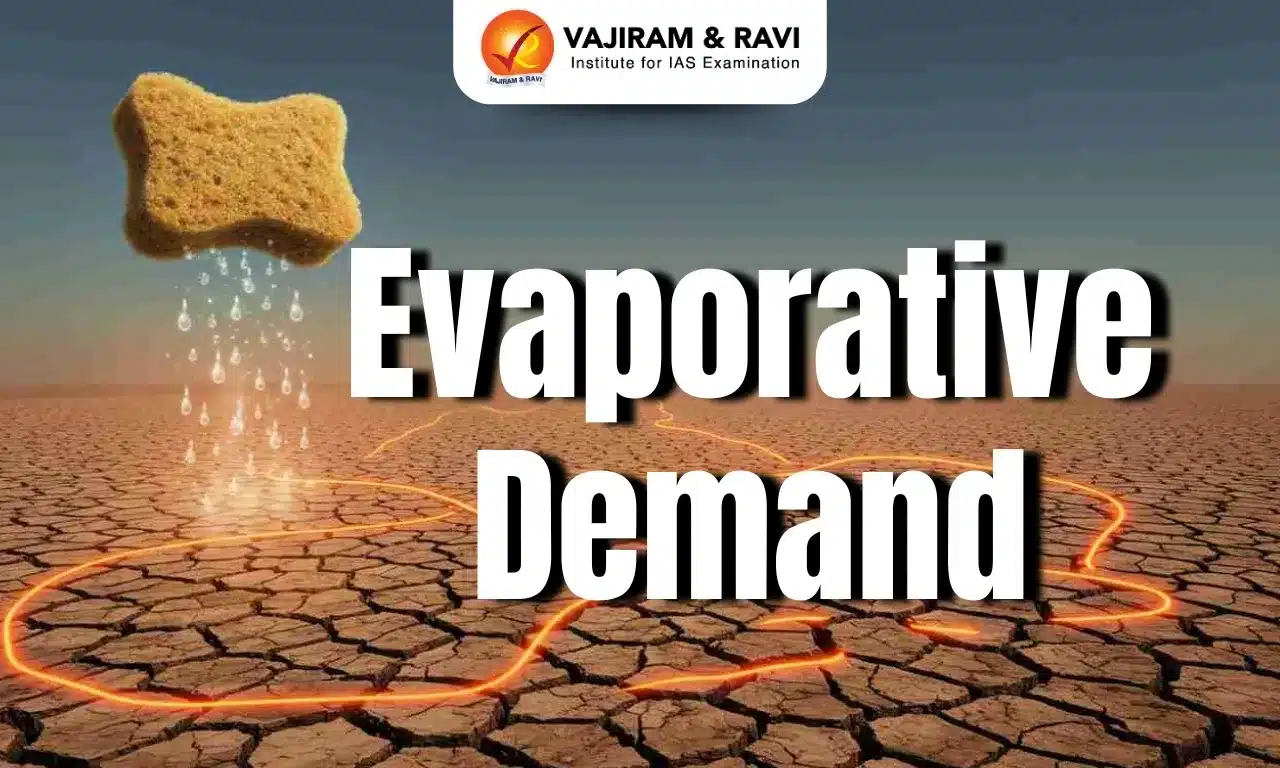Evaporative Demand Latest News
The rising evaporative demand in India is exposing significant gaps in the country’s climate data and research.
About Evaporative Demand
- Evaporative demand is a measure of how thirsty the atmosphere is.
- It determines the near-maximum of how much water will evaporate from a given piece of land if sufficient water is available.
- It does not necessarily relate to actual evaporation rate, as if there is little water supply there can only be a small evaporation rate, no matter how large the demand.
- It is driven by atmospheric factors including temperature, wind speed, humidity and cloud cover.
- Periods of high evaporative demand are connected to droughts and increased fire danger.
- Tracking extended periods with above normal evaporative demand can be a useful way to detect drought onset, drought intensification, and elevated fire danger.
- Above normal temperatures, clear skies, and wind speed, and below normal humidity all drive evaporative demand up and lead to quicker drying at the surface.
- Soil moisture is reduced which leads to less water available for plants and vegetation becomes stressed and more flammable.
- When extended periods of below normal precipitation overlap with extended periods of above normal evaporative demand fuels become critically dry favoring rapidly spreading wildfires.
What is a Thirstwave?
- It denotes three or more contiguous days of intense evaporative demand.
- While heat waves are caused by particular temperature and wind patterns, a thirstwave is the product of temperature, humidity, solar radiation, and wind speed.
- When temperatures rise, the consequences include more heat as well as the mechanics of water exchange between land and atmosphere, which in turn alters humidity, wind, and solar radiation.
- In a warming world, the researchers found that thirstwaves have grown more intense, are more frequent, and are lasting longer.
Source: TH
Last updated on December, 2025
→ Check out the latest UPSC Syllabus 2026 here.
→ Join Vajiram & Ravi’s Interview Guidance Programme for expert help to crack your final UPSC stage.
→ UPSC Mains Result 2025 is now out.
→ UPSC Notification 2026 is scheduled to be released on January 14, 2026.
→ UPSC Calendar 2026 is released on 15th May, 2025.
→ UPSC Prelims 2026 will be conducted on 24th May, 2026 & UPSC Mains 2026 will be conducted on 21st August 2026.
→ The UPSC Selection Process is of 3 stages-Prelims, Mains and Interview.
→ UPSC Result 2024 is released with latest UPSC Marksheet 2024. Check Now!
→ UPSC Toppers List 2024 is released now. Shakti Dubey is UPSC AIR 1 2024 Topper.
→ Also check Best IAS Coaching in Delhi
Evaporative Demand FAQs
Q1. What does evaporative demand mean?+
Q2. What atmospheric condition causes increased evaporative demand?+
Q3. What does high evaporative demand indicate about surface moisture?+
Q4. What is the relationship between evaporative demand and droughts?+
Q5. What impact does high evaporative demand have on vegetation?+
Tags: evaporative demand prelims pointers upsc current affairs upsc prelims current affairs

















